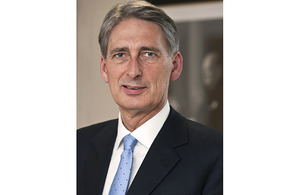The Defence Secretary on delivering value for money and innovation in Defence
Defence Secretary Philip Hammond has outlined the vision for delivering value for money and innovation in Defence at the Reform Defence Conference in London.

Defence Secretary Philip Hammond [Picture: Harland Quarrington, Crown Copyright/MOD 2011
Speaking yesterday, Mr Hammond used his speech to talk about how, over the last two-and-a-half years, the Department has set about reforming the way Defence is managed in order to deliver improved efficiency.
He began by recapping the scale of the reform challenge faced by Defence:
The overheated equipment programme this government inherited was a symptom of a much deeper malaise that was fundamentally about the way in which the Department operated.
Without fundamental reform in the way the budget is managed, the way decisions are taken, and how Defence is run, the same problems will rematerialise.
After two-and-a-half years of the transformation project, the Defence Secretary said we have started to see the benefits of change.
He said:
But if we want them to be sustained, we need to ensure that the changes we are making in how Defence is managed become engrained in its culture so that budgetary discipline becomes the supporting foundation of everything we do.
Mr Hammond said that while Defence needed a solid financial foundation, it was the people that really mattered and made the difference, and therefore an attractive employment package to attract and keep the best was needed:
We have to ensure that we can compete to attract them. And it has been 40 years since the current package of terms and conditions was last fully updated. In the meantime it has been adapted and modified on an ad-hoc basis. So that now, it is costly, complex, impenetrable and inflexible.
In many ways, it fails to meet the requirements of today’s Service personnel, or to reflect the needs of modern family life. So we need to modernise the offer we make to our people.
He said that a new employment model was needed and this would need to be flexible to meet the varying and individual needs of Service personnel:
There is no identikit soldier, sailor or airman. Each one is an individual, with different needs at different points in their careers.
He added that the package needs to be affordable and sustainable in the long-term and attractive to Service personnel and fair to the taxpayer:
When we look at the structure of pay and allowances it will be to make it more flexible and more responsive to individual needs as well as to better reflect the priorities of the Service.
But, within an envelope that is broadly cost-neutral overall, designed to deliver better value to the individual at the same broad cost to the taxpayer.
He stressed that this ‘New Employment Model’, or NEM, isn’t a single project at all but a number of distinct workstrands addressing different challenges, and it is not about overnight transformation but will be a process out to 2020 and beyond:
At the heart of the NEM will be a measured shift in the nature of the offer: towards a greater emphasis on individual value, personal choice and responsibility.
Ensuring greater value to the individual through more flexible tailoring of the complex package that makes up Armed Forces remuneration.
And more stability to Service families through fewer moves, more opportunities for employment of the partners, and greater opportunities for home ownership.
On housing, Mr Hammond said that, in a 22-year career, as currently structured, a typical Service person could expect to be asked to move 10 or more times:
We want this to change. As we bring the British Army back from Germany we want to offer more stability and in doing so make it possible for families to set down roots as civilian families do. Greatly reducing the need for family moves.
Concluding, the Defence Secretary said we should not underestimate the scale of what is still to be done:
The real, long-term challenge is to change behaviours, align incentives and shift the culture.
So that the resource discipline that we have imposed feeds through into sustainable, bottom-up efficiency gain, not reduction in output.
In other words, the challenge is now to improve the productivity of every part of the Defence organisation. Rejecting the notion that a given percentage cut in the Defence Budget must inevitably mean a similar percentage cut in our military capability. That is the key task for 2013 for the leadership of Defence.
None of us is in any doubt about the scale of that task, but neither do we doubt its centrality to everything we are doing.